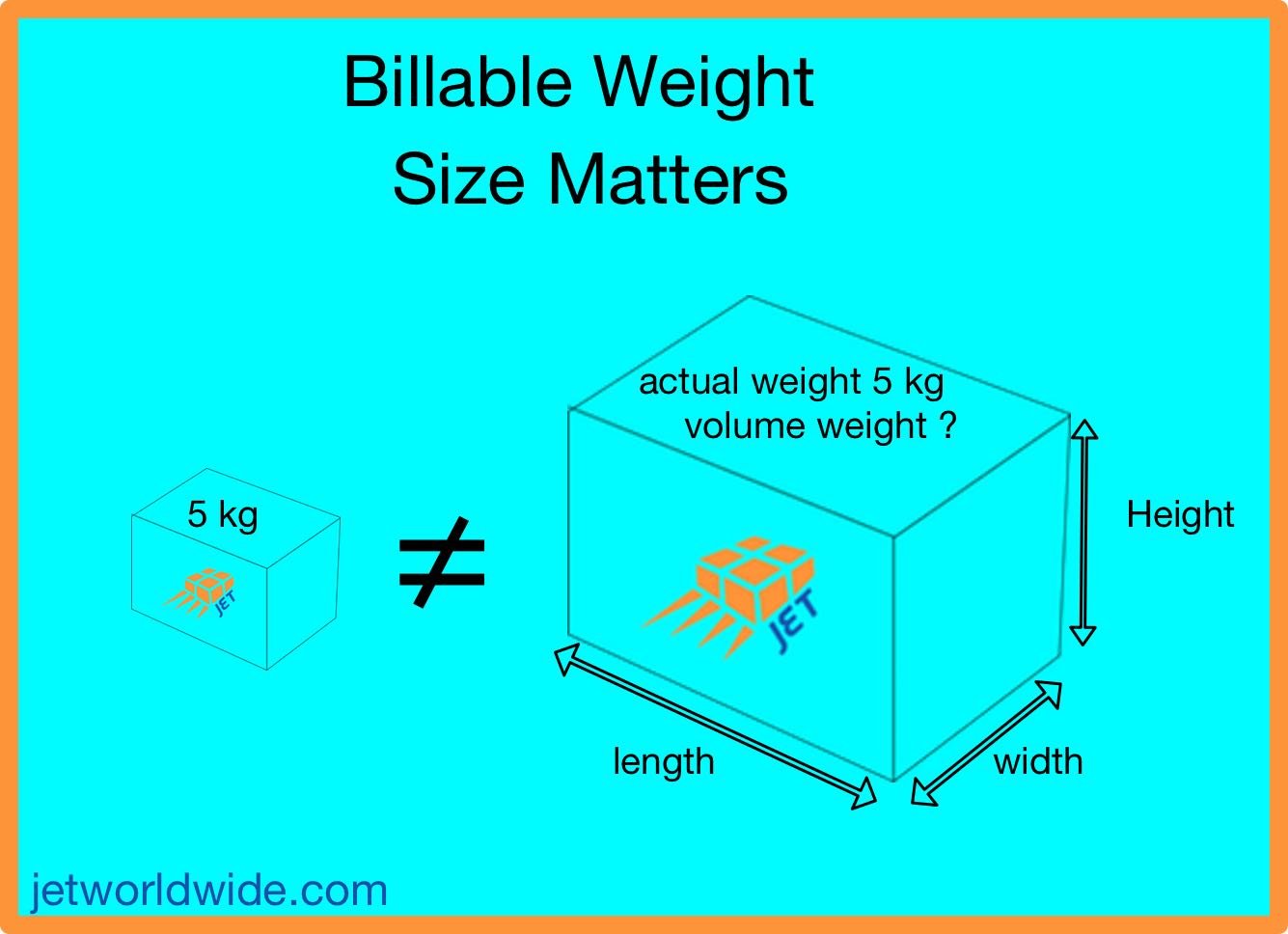
Volume Weight and CBM explained
Chargeable weight: Weight versus Volume
Perhaps one of the biggest questions we get from new shippers concerns the calculation of volume weight. Even experienced shippers are sometimes surprised to find they are charged for a higher weight than what the shipment actually weighed.
International air cargo carriers - especially for airfreight from China - are getting more aggressive in capturing volume weight.
To help clarify this issue, we have decided to break it out as a separate blog.
Disclaimer: The information in Jet Worldwide online content, including this post, is for general information only
 A trusted brand helping business connect across borders for over 40 years!
A trusted brand helping business connect across borders for over 40 years!
Contact our team for a consultation.
Related Resources
- Commercial invoice for international shipping
- Declared value, CIF & valuation for international shipping
- When to include a certificate of origin
- What is an HS code? Tariff classification basics
- Canada importer registration for CARM
- Canada export declaration (CERS): B13A
- What is a bill of lading or waybill?
- Choosing a Canadian customs broker
- Shipping via ocean freight to and from Canada
- Common CANADIAN IMPORT FEES
Lower density shipments - shipments that do not weight a lot but take up a lot of space - are charged per volume calculations.
Air freight is measured in two ways: cube and weight. Cube refers to the volume of the freight. A plane is said to “cube out” when it’s fully filled up but doesn’t approach its weight capacity.
What is "volume weight"?

Carriers consider their cost based on the weight and size of an item. A large shipment that takes up a disproportionate space in the cargo hold of an aircraft can be just as costly to handle than a smaller - yet heavier - item.
Space on an aircraft is considered as much a cost as the actual weight of the shipment.
In consideration of the "cost of space" on an aircraft, carriers have developed formulas that convert cubic size (usually square feet or square meters) with a weight equivalent. For example, a carrier may equate 1 cubic meter to the equivalent of sending 200 kg.
Low Density Cargo is charged higher than the actual weight.
One of the best ways to explain volume pricing is when a "really big shipment does not weight much." In industry terms, this is described as Low Density Cargo: Low density cargo, is charged at “volume weight” rather than actual weight.
Package Measurements: Always round up - when calculating costs:
All carriers systematically scan and capture the weight and dimension of each package; rounding up to the nearest inch or centimetre.
It is important to note that carriers will not lower “over declared” dimensions. It is best to be accurate but not to over declare either the weight or dimensions with the carrier.
Download printable ruler on A4 sheet of paper
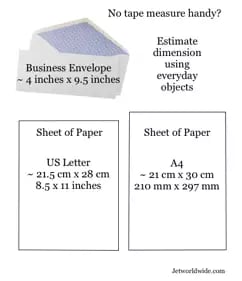 Download printable ruler on letter size sheet of paper
Download printable ruler on letter size sheet of paper
Understandng CBM = Cubic Meters
CBM, the term for cubic meters, is used often in shipping documents and rate quotes. Determining the cubic meters is simply a matter of multiplying (in meters) the length, width and height of the shipment.
CBM = Cubic Meters and steps to determine the volume weight.
Steps to determine volume weight:
- Calculate the square meters. Multiply the Length, Width and Height of the shipment in meters (or in centimeters and divide by 100).
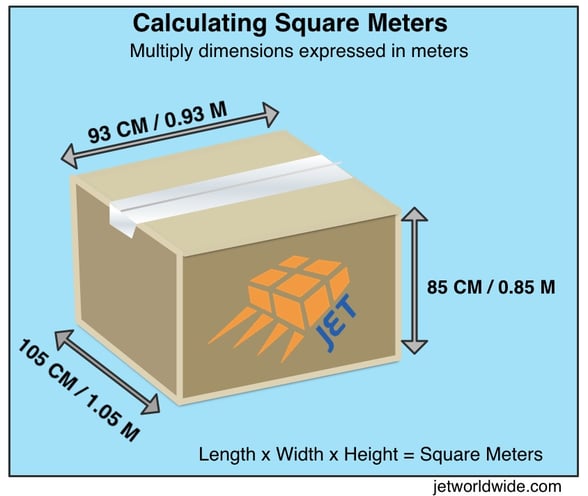
- Multiply the cubic meters (obtained in step 1) by the “volume factor” (provided by the carrier).
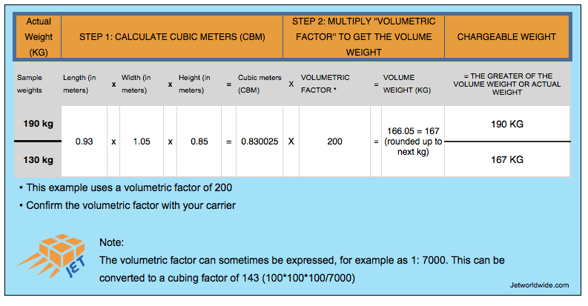
Although carriers increasingly depend on electronic sensors to capture the dimensions, it is not uncommon for shippers to be surprised by recorded dimensions and related costs. It is important that shippers know their dimensions prior to shipping to have an accurate estimate of their cost and to ensure they are being charged correctly.
Dimensional Weight When Shipping via FedEx, UPS and DHL
Check with the carrier to confirm their chargeable weight policy. However, a common formula to calculate volume (or dimensional) weight for international air shipments is the product of the length, width and height (in cm) divided by 5000.
Here is an example using the volume formula L x W x H cm /5000= volume weight in kg:
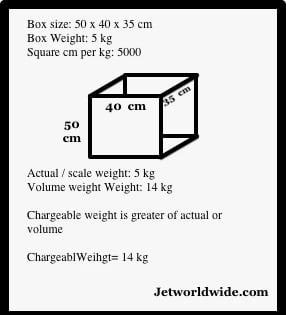 A shipping a box that weighs 5 kg with dimensions of 50 cm x 40 cmx 35 cm
A shipping a box that weighs 5 kg with dimensions of 50 cm x 40 cmx 35 cm
- The product of the dimension in centimeters 50 x 40 x 35 is 70000
- 70000 divided by 5000 = 14 kg volume weight
- Volume weight of 14 kg is larger than actual weight of 5 kg
- Chargeable weight: 14 kg
Declared Weight: A Consideration for Chargeable Weight
Shippers should be aware that carriers also consider declared weight in the chargeable weight policy. If a shipper declares, for example 100 kg instead of 10 kg, the carrier will charge for 100 kg. Amazingly, some carriers actually have a policy* not to issue a credit to shippers when they mistakenly declare a weight that is higher than the actual weight.
We advise shippers to never over declare weights as carriers can refuse to credit to the actual chargeable weight.
* For many carriers, the chargeable weight equals to the higher of the following three factors:
- Actual weight
- Volume/ dimensional Weight (explained above)
- Declared Weight
International Shipping via Jet Worldwide
Jet Worldwide: A trusted brand offering international shipping for over 40 years!- Options for cross border shipping of parcels, pallets and online orders
- Transparency and logistics support.
- Access to shipping quotes and innovative processes

Best options for shipping freight internationally to / from Canada.
- Air freight: This is the fastest option with economy air options
- Ocean: Best for large commercial orders
- Local post options are generally best for individuals shipping personal items
- FedEX , DHL, UPS air options are well known with information readily available via their websites.
When choosing a shipping method, you will need to consider factors such as the size and weight of your freight, the time frame in which you need it to arrive, and your budget. It may be helpful to compare quotes from different carriers to find the best option for your needs.





